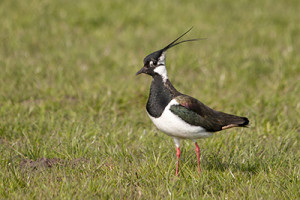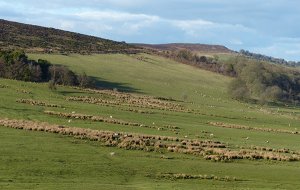BWEUF survey methods
The survey period has ended and data entry is now closed.
Each Tetrad contains at least 80 hectares of ‘In-bye’ land, which is the enclosed farmland below the moorland. This habitat supports important breeding populations of waders and other species.
Timing of visits
A total of two survey visits was required and an optional additional recce visit was recommended.
- March 2016: recce visit to establish the best access routes and contact landowners where access permission may be required.
- April to mid July 2016: two visits at least two weeks apart:
- Visit 1 – 1st April to 31st May
- Visit 2 - 1st June 15th July
The survey visits had to be undertaken during the morning, starting 30 minutes after sunrise and finishing by midday. Each visit will have taken between two and four hours, depending on the number of fields to be covered.
What to record
During the two visits surveys needed to study, by entering or viewing from outside, as many of the ‘In-bye’ fields as possible, and recorded details of habitat and farm management/activities, as well as counting breeding birds.
The primary focus was to record the number of pairs of breeding waders, including Curlew, Lapwing, Oystercatcher, Redshank and Snipe. However, a number of other important upland breeding species (see Full Survey Instructions) were also to be recorded.
Access permissions
All observers were reminded of the need to obtain permission to cross any private land, and to follow the BTO's Health & Safety guidelines. Where agri-environment schemes are present, the survey organiser attempted to contact the landowner to inform them that the survey was taking place.
Further information
All the instructions and forms needed to participate are available on the resources page. Please direct any questions to the survey organiser Greg Conway (greg.conway [at] bto.org).








Share this page